- News
Dr. Xiaolu Yang, the Winner of the "Silver Snake Award" : Can Eye Tumors Only Be Enucleated? No.
Link of the original article:https://mp.weixin.qq.com/s/vDSvfHvjYrRFZg7AuYt83Q
Dr.Xiaolu Yang, attending physician of department of ophthalmology, Shanghai General Hospital, just won the third prize of the 19th "Silver Snake Award", the highest honorary award for young talents in the Shanghai health system.
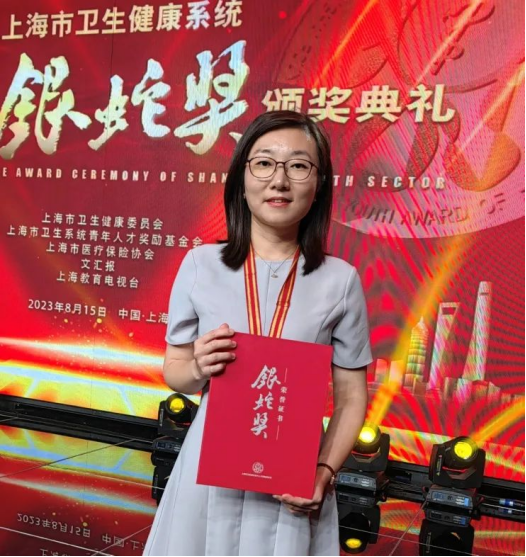
“The tumor is benign." The tumor doctor described, which is the size of a soybean, although very small compared with other organ tumors, when it grows in the eye, it may cause the patient to lose vision; If it is a malignant tumor, it will develop rapidly and be life-threatening. When the pathological report of benign conclusion was obtained, the patient xiaokuang (a pseudonym) and Dr. Xiaolu Yang felt relieved. According to the traditional treatment method, eye enucleation would be the only option for xiaokuang's condition. Tumor malignency can only be confirmed by pathology after enucleation. If it is benign, although the prognosis is much better than malignant one, the patient will permenantly lost one eye. Now, the tumor has been sucessfully resected and Xiao Kuang's vision has recovered to 20/20. For a girl in her twenties, the impact of the disease on her is minimized. She can do anything she wants in the future.
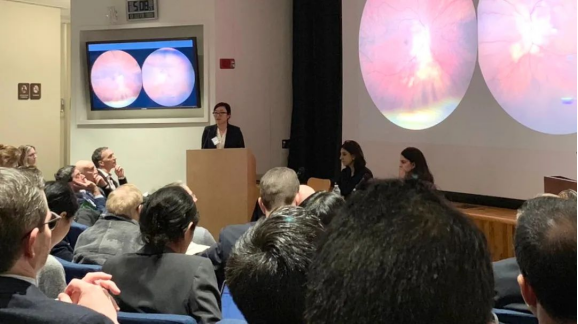
Intraocular tumor, which Dr. Xiaolu Yang specialized in, is a disease with low incidence but high malignancy in China. The incidence of ocular malignant tumors in Chinese adults is about 5 per million, but the 5-year mortality rate of patients with malignant ocular tumors can be as high as 50%. Due to the relatively small number of patients, eye tumor patients are currently pooled in two or three renowned hospitals with relatively strong comprehensive strength of ophthalmology in the country. It is Dr. Xiaolu Yang's professional goal to eliminate the threat of tumor and keep her eyes, and it is also the biggest expectation of patients who unfortunately suffer from ocular tumor. After studying in the United States and returning home in 2019, Dr. Xiaolu Yang built a team in this direction, pioneered and innovated. She led the ocular tumor local radiotherapy technology in Shanghai General Hospital, carried out the ultra low-dose radiotherapy of ocular indolent lymphoma for the first time in China, established a multimodal image diagnostic system for ocular tumor, and completed the ocular tumor resection surgery with high difficulty and eye preservation... Despite the challenges, However, Yangxiaolu took her ideals with her to achieve her goals one by one. Dr.xiaolu Yang said that the team is currently establishing a specific ocular tumor disease database and a holographic database of biological samples, including cohort studies, clinical data mining, multimodal image analysis, prognosis follow-up data, multi omics data application, etc., hoping to provide a more scientific and accurate basic information and support for exploring the mechanism of ocular tumor occurrence and development, optimizing and improving treatment plans, improving disease prognosis, and formulating health policies. Radiotherapy from scratch. Dr. Xiaolu Yang spoke quietly but clearly. She said that when she was a child, she was timid and "sat still" and "got good grades". After becoming an ophthalmologist, her childhood classmates were surprised, "I don't look like a person who can hold a scalpel". After choosing to study medicine, Dr. Xiaolu Yang found that she liked hands-on operation. In addition, she could choose a professional direction with excellent results. She chose "golden eye". Dr. Xiaolu Yang learned from Professor Xuxun, an authoritative expert in fundus diseases in China, and completed her master's and doctoral studies. She grew up in the Department of Ophthalmology at Shanghai General Hospital, which has a deep foundation. In 2018, under the suggestion of Professor Xu Xun, Dr. Xiaolu Yang visited the Wills Eye Hospital in the United States. Her mentor was Dr. Carol L. shields, a world-renowned expert in the field of ocular oncology. This time, Dr. Xiaolu Yang went to the United States for further study, which decided that she would return home to improve her professional level of ocular oncology. The discipline of ocular oncology started relatively late in China. "Radiotherapy has been started in the West since the 1970s and 1980s, but it did not start in China until about 2000". In fact, until now, many patients with ocular tumors still accept enucleation, because there are only a few medical institutions in China that can implement radiotherapy and eye conserving surgery.
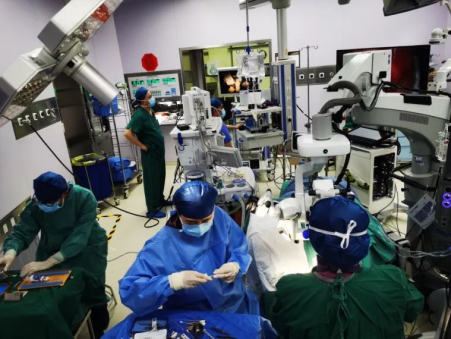
Eye tumors also have their own characteristics. It is difficult to find early tumors through technical means. Usually, patients will go for further examination only when the tumors are relatively large and have occupied space and affected vision. Uveal melanoma accounts for a large proportion of adult malignant tumors, and pediatric retinoblastoma is common in children. For uveal melanoma, the mainstream treatment method in foreign countries is intraocular radiation therapy. This technology is to implant a tiny application with radioactive particles into a specific position in the eye, so that it can continue to radiotherapy the tumor body, so as to achieve the purpose of reducing the tumor body. This precise radiation technology avoids damaging other structures of the eye and directly targets the root of the tumor for radiation therapy. In terms of accuracy, effectiveness and protection of surrounding tissues, intraocular radiation therapy is currently the best treatment technology for uveal melanoma. As the application is a radioactive product and cannot be imported, Dr. Xiaolu Yang's first step when returning home is to cooperate with enterprises to independently develop domestic intraocular applicators in order to do this treatment for domestic patients. Nuclear medicine is an independent discipline, and radiation therapy is a strange field for Dr. Xiaolu Yang. But in order to develop domestic intraocular applicators, Dr. Xiaolu Yang must step out of her comfort zone and learn new knowledge. After continuous attempts and adjustments, the development of intraocular applicator has been successful. In order to carry out this special operation, yangxiaolu took the lead to complete the identification of personnel qualifications and the preparation of the operation site.
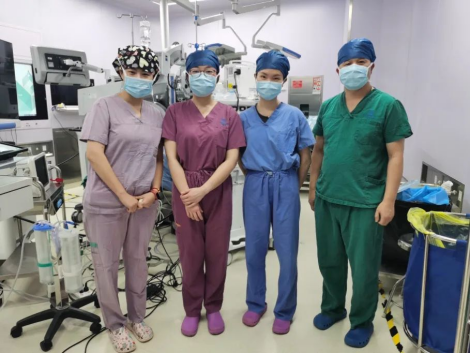
Recently, Dr. Xiaolu Yang completed a surgery to remove the tumor after receiving intraocular application radiotherapy. In the ward after completing the operation, the patient's daughter hugged Dr. Xiaolu Yang excitedly. The patient was from Xinjiang, and his condition was complex. He not only had huge intraocular tumor, but also complicated with vitreous hemorrhage and retinal detachment. The operation lasted for more than three hours, and the tumor was successfully removed on the premise of keeping the eyeball. At the first visit a few months ago, the middle-aged patient in his 50s was accompanied by his daughter. They got the diagnosis of eye tumor in their hometown, but the local doctors had no better treatment for this condition. At the first diagnosis, the tumor space occupying led to vision loss, but it was still visible. Just a few days before the operation, the patient suddenly became completely blind. The doctor found that the patient's eyes were full of blood, and the tumor body was also obscured. Dr. Xiaolu Yang immediately decided to apply intraocular radiation therapy to the patient first. Two months later, the radiotherapy effect was good, and the tumor volume was significantly reduced. During the examination, yangxiaolu found that the patient still had intraocular hemorrhage and retinal detachment. Even if the tumor was getting small, the patient's vision could not be recovered. Therefore, Dr. Xiaolu Yang is ready to perform tumor resection for the patient and complete the operation of intraocular hemorrhage treatment and retinal detachment treatment at the same time. It is conceivably difficult for one operation to solve three problems, but in order to give the patient who came from afar the hope of keeping her eyesight, Dr. Xiaolu Yang decided to do it, and this decision was also supported by the patient and his family. Finally, the tumor was successfully removed during the operation, intraocular hematocele was removed, and the retina was reset. Yangxiaolu said that the patient's condition well illustrated the value of intraocular application radiotherapy technology in the treatment of ocular tumors. Some patients had the conditions for surgical resection of tumors after tumor shrinkage was achieved by radiotherapy, so that they did not have to choose enucleation, and they were also expected to restore vision. Shoulder the pressure for the patient's eyesight any doctor must have experienced regret in his career, and a good doctor will turn regret into driving force. In 2020, a young Shanghai local patient found Dr. Xiaolu Yang. According to her condition at that time, if she received radiotherapy, it was very likely that she could preseve her eyeball. But at that time, Dr. Xiaolu Yang was still making technical preparations and could not carry out treatment, and the special situation made it difficult to go to other places for treatment. Finally, the patient had her eyeball removed. The patient later became a friend of Dr. Xiaolu Yang. Her experience urged Dr. Xiaolu Yang to speed up her progress and carry out radiotherapy as soon as possible. Dr. Xiaolu Yang said that she knew the great blow that blindness would bring to a person, so she always tried to choose the way to treat eye tumors to keep her eyes and eyesight, even if such a way would bring more pressure to herself.
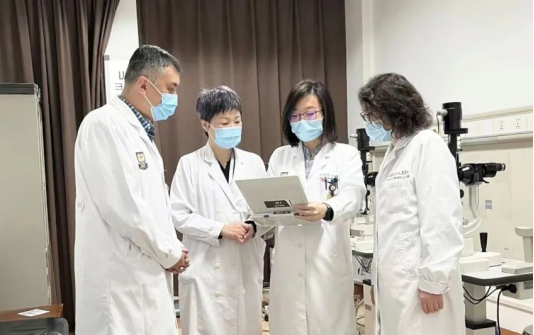
The girl Xiao Kuang, who appeared at the beginning of the article, was blind when came to Dr. Yang’s clinic. Her tumor size belongs to the relatively large eye tumor, and the location is "tricky". Xiao Kuang said that she found her vision gradually decreased. She thought it was due to myopia. Not until when she went to change glasses, was she suspected to have ocular diseases. The real cause of her blindness was the opacification of lens caused by tumor compression. The size and location of the tumor determine the difficulty of the operation, and the operation Xiao Kuang wants to accept is undoubtedly difficult and risky. "We call this kind of surgery 'fenestration', which is like opening a window in a closed room, removing the tumor, and then suturing it." because the eye itself is small, the intraocular structure is complex, and the blood supply is rich, other tissues may be damaged in the process of removing the tumor, resulting in massive blood loss or other serious consequences, so not every doctor has the technology and courage to accept a patient like Xiao Kuang. During the operation, Dr. Xiaolu Yang removed the tumor for the patient, and the cloudy crystals were also removed. The eyeballs and eyesight were saved. Dr. Xiaolu Yang said that the two young patients she was impressed within the past two years were both with relatively large tumors, and the final case showed that both tumors were benign. This makes her feel more valuable for patients.
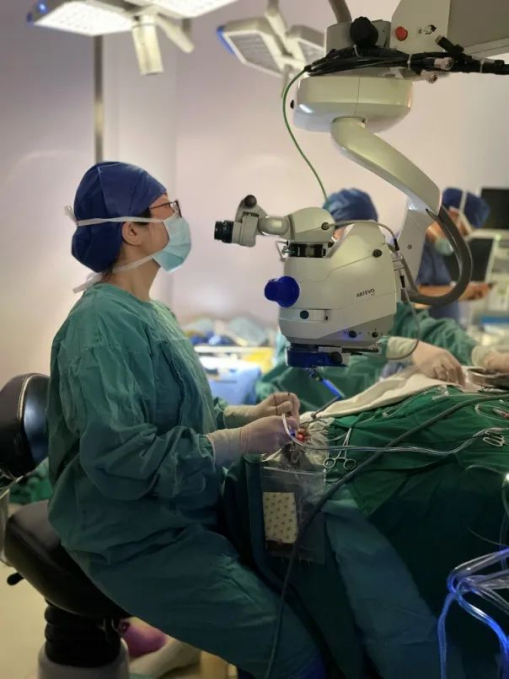
85% of all information obtained by people is obtained through the eyes. The fear of blindness may be second only to death, so we hope to have more technologies to help patients who are on the verge of darkness." breaking boundaries and constantly innovating in addition to uveal melanoma, intraocular lymphoma is also a relatively common type of ocular tumors. It is a non solid tumor, which is very difficult to diagnose, and the degree of malignancy is also extremely high. 50%-90% of patients simultaneously merge or eventually develop into central nervous system lymphoma, which is life-threatening. The traditional diagnosis method needs to obtain cytopathological samples, and a certain amount of tumor cell samples to draw a conclusion. At present, it is increasingly recognized internationally that cytokine detection, gene rearrangement and other methods can assist in the diagnosis of cellular pathology. In the past, such tests were sent to a third-party institution outside the hospital. After returning from the study, yangxiaolu cooperated with the laboratory department of the hospital to carry out the detection of cytokines and cellular immunology in intraocular fluid, and established a comprehensive diagnosis scheme for intraocular lymphoma, which increased the positive rate of diagnosis of intraocular lymphoma from 50% to 95%, and achieved a two-year survival rate of 100%. "Taking lymphoma as the breakthrough point, the scope of intraocular fluid detection has gradually expanded, and now basically all intraocular fluid detection projects can be completed in the hospital." Dr. Xiaolu Yang said that the intraocular fluid detection service has been extended to the whole country, and patients from other places can send test samples from other places to Shanghai General Hospital for detection through Internet hospital registration. Dr. Xiaolu Yang also carried out the very low-dose radiation innovative treatment of ocular indolent lymphoma for the first time in China. Only 10% of the traditional radiation dose was used to achieve the treatment effect, which greatly reduced the dose and frequency of radiotherapy for patients, saved limited medical resources, reduced complications, and benefited patients. At present, more than 100 patients have been treated, with a cure rate of 95% and a survival rate of 100%. Dr. Xiaolu Yang said that the biggest attraction of her career as a doctor is that she can not stick to traditional methods, and can continue to innovate and explore newer treatment technologies for patients. It made her feel tired and happy. "Because ophthalmic surgery is relatively delicate, doctors operate under a microscope while sitting, and have high requirements for the stability of a person's movements and psychology. Sitting doctors are no easier than standing doctors, and may be more stressful.
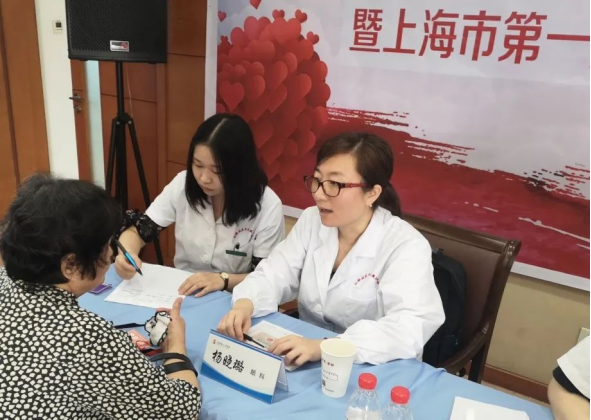
Dr. Xiaolu Yang's major in ocular oncology is not only related to the patient's vision, but also to the patient's safety. She said that she felt that her burden might be heavier, and she still hoped to do something for the patient with her relatively modest strength.
